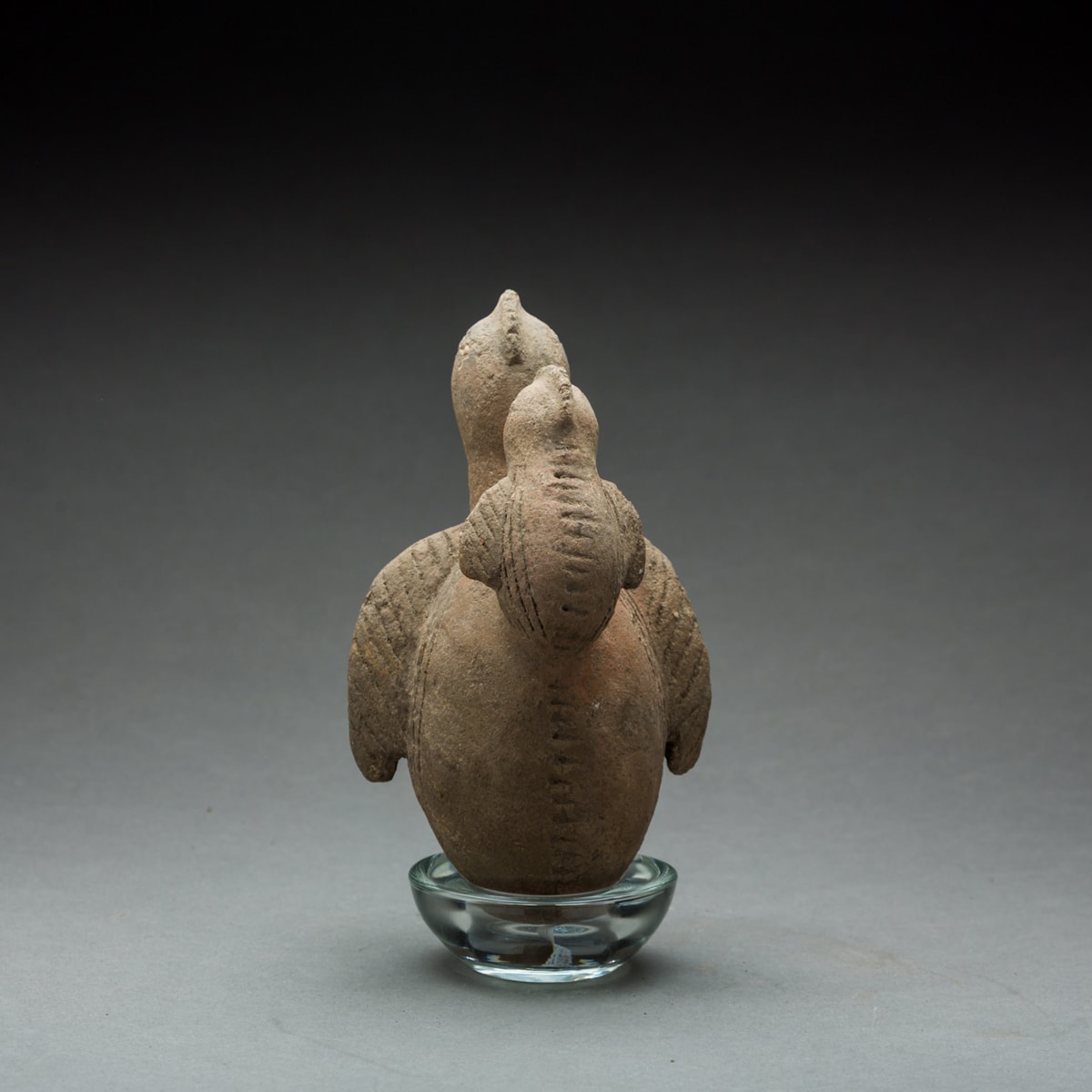Bankoni Terracotta Bird Vessel, 12th Century CE - 15th Century CE
Terracotta
17.1 x 10.2 cm
6 3/4 x 4 1/8 in
6 3/4 x 4 1/8 in
BF.028 (LSO)
Further images
This zoomorphic flask was made by the Bankoni people of the Mali Empire, between the 12th and 15th centuries AD. It is of complex construction, with a globular body edged...
This zoomorphic flask was made by the Bankoni people of the Mali Empire, between the 12th and 15th centuries AD. It is of complex construction, with a globular body edged with long narrow “wings”, a columnar neck and a bird’s head – perhaps representing a chicken – with a crested comb. There is a chick on its back, identical to the main figure in all but size. The body is decorated with hatched lines and dashes in a geometric pattern based around a line of dashes connecting neck to base.
The Bankoni is strictly speaking a ceramic style, which – along with the Djenne style - was the main stylistic subdivision of the Malian Empire. The Djenne and Bankoni styles ran contemporaneously and were based around the cities of Djenne-Djenno and Bamako, respectively.
Djenne and Bankoni sculpture is highly significant in the development of West African art styles. In simplistic terms, their central preoccupation was seated, standing and kneeling human figures, in addition to equestrian and zoomorphic/anthropomorphic divertimenti. Djenne pieces tend to be naturalistic, while Bankoni sculptures tend towards elongated proportions. Owing to the popularity of these pieces, sites have been systematically plundered so we know almost nothing of their culture beyond its evident refinement. It was evidently highly socially stratified, with major markers of wealth including scarifications, jewellery, horses and prestige artefacts such as the sculptures themselves.
Objects such as this have long posed a puzzle to African art historians. They are mostly found in graves, but it is unclear whether they also had a function in everyday activities, or were made specifically as burial goods. It has been suggested that they were rattles or alternatively that they represent sacrificial animals that could be “sacrificed” without losing valuable livestock. Their obvious lack of utilitarian function has led to the theory that they were devotional objects of some sort. Whatever their function, however, they are elegant and attractive pieces of ancient African art.
The Bankoni is strictly speaking a ceramic style, which – along with the Djenne style - was the main stylistic subdivision of the Malian Empire. The Djenne and Bankoni styles ran contemporaneously and were based around the cities of Djenne-Djenno and Bamako, respectively.
Djenne and Bankoni sculpture is highly significant in the development of West African art styles. In simplistic terms, their central preoccupation was seated, standing and kneeling human figures, in addition to equestrian and zoomorphic/anthropomorphic divertimenti. Djenne pieces tend to be naturalistic, while Bankoni sculptures tend towards elongated proportions. Owing to the popularity of these pieces, sites have been systematically plundered so we know almost nothing of their culture beyond its evident refinement. It was evidently highly socially stratified, with major markers of wealth including scarifications, jewellery, horses and prestige artefacts such as the sculptures themselves.
Objects such as this have long posed a puzzle to African art historians. They are mostly found in graves, but it is unclear whether they also had a function in everyday activities, or were made specifically as burial goods. It has been suggested that they were rattles or alternatively that they represent sacrificial animals that could be “sacrificed” without losing valuable livestock. Their obvious lack of utilitarian function has led to the theory that they were devotional objects of some sort. Whatever their function, however, they are elegant and attractive pieces of ancient African art.







